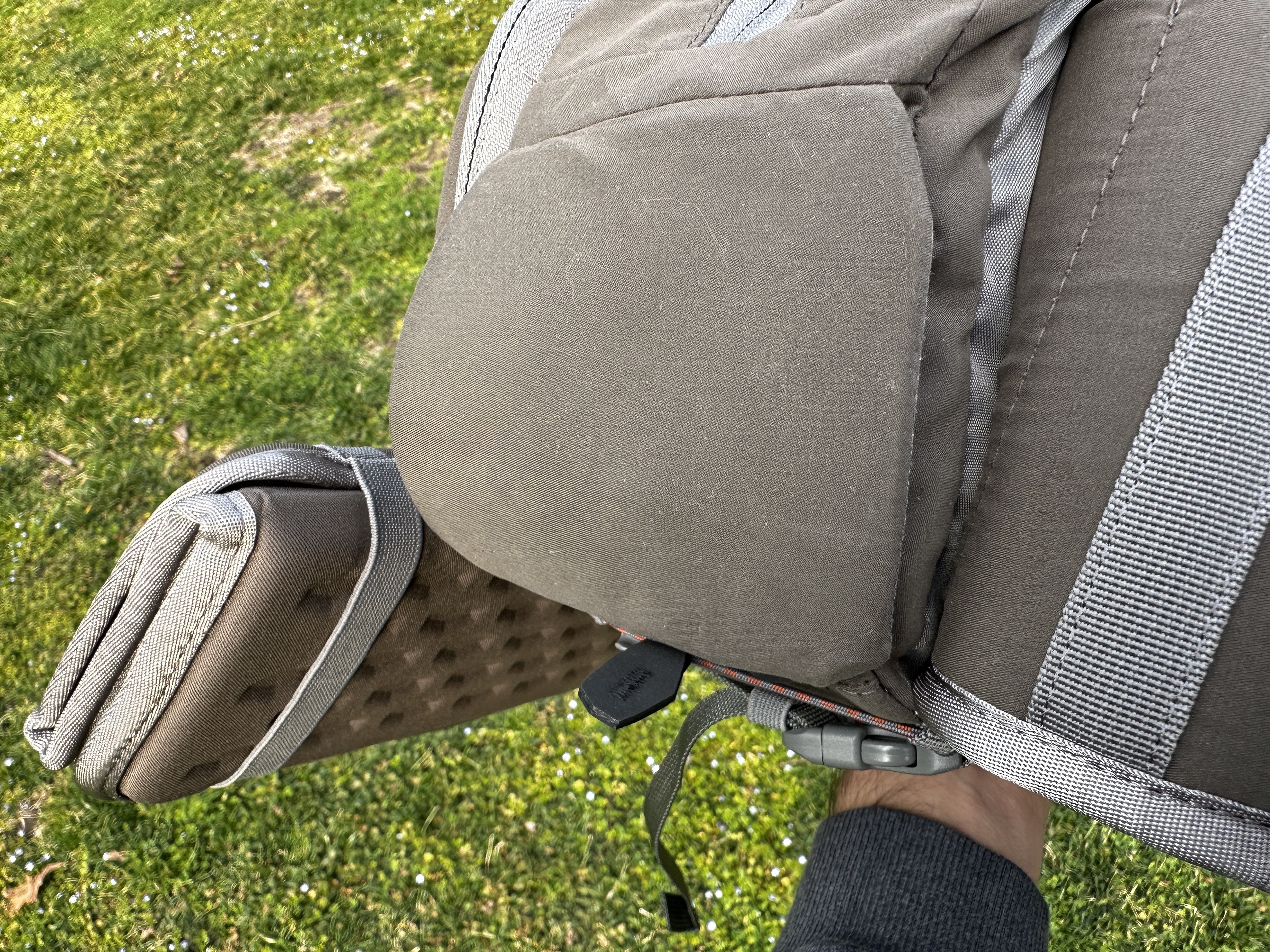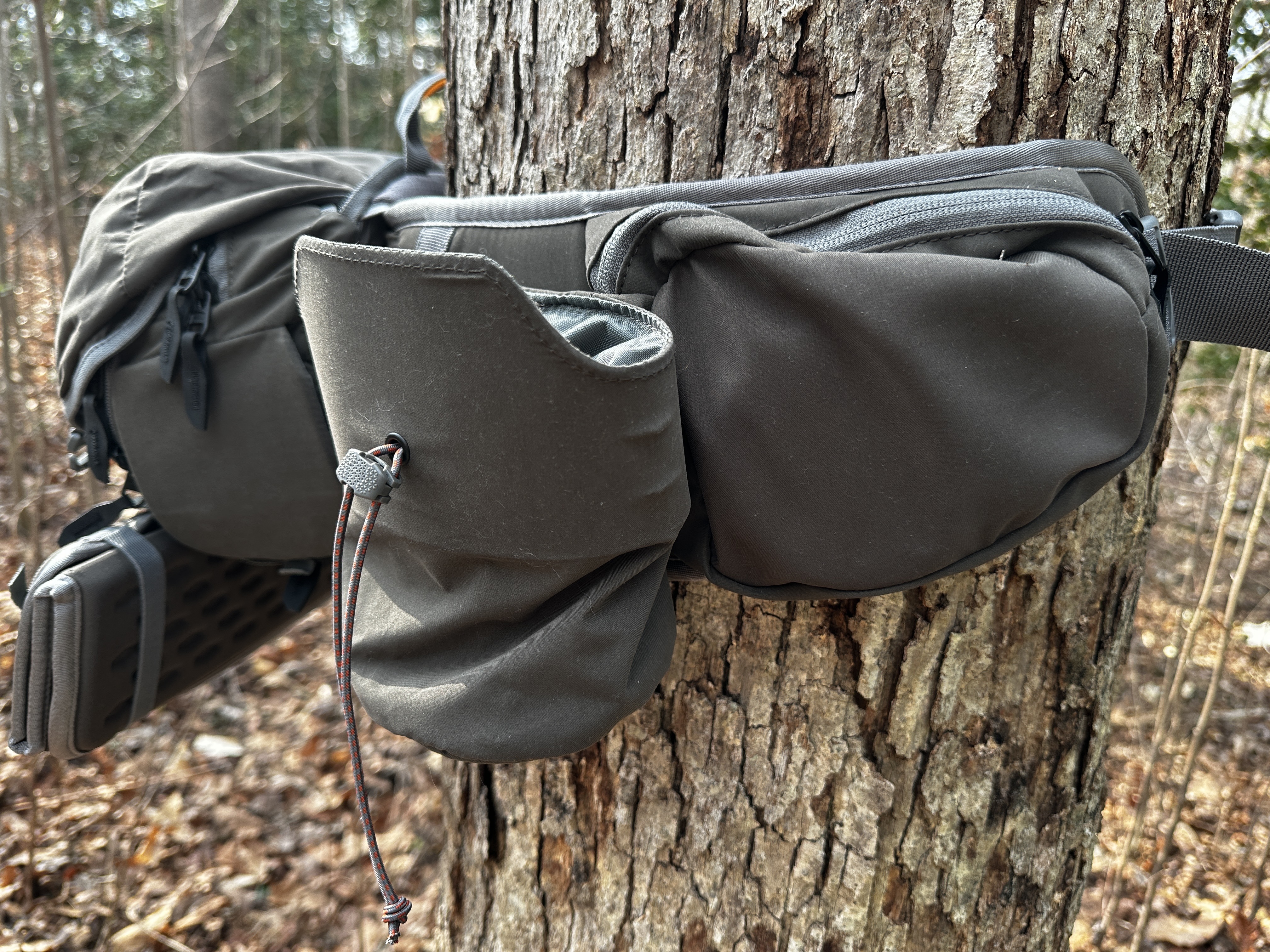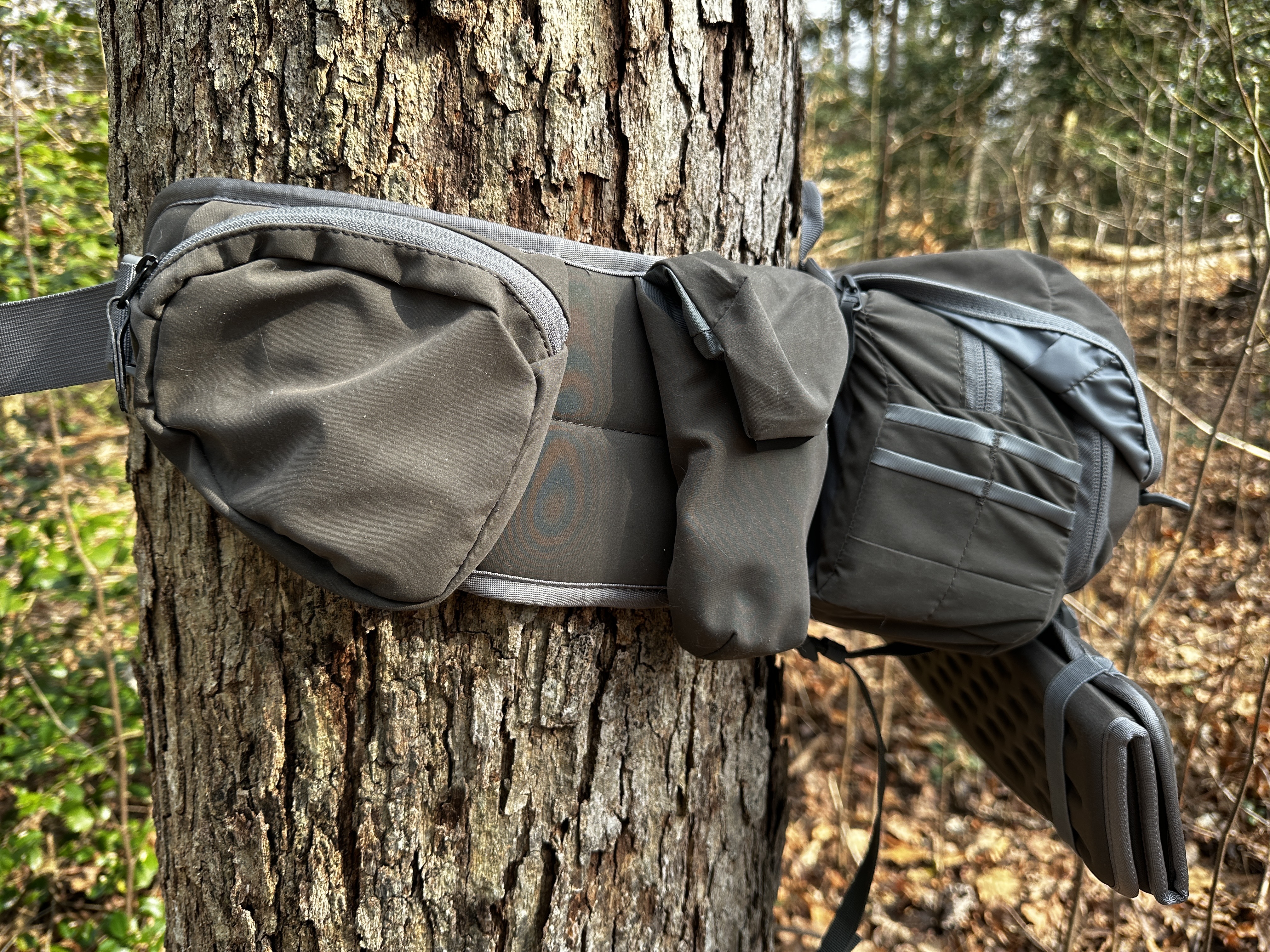Sitka Turkey Tool Belt Review
We may earn revenue from the products available on this page and participate in affiliate programs. Learn More ›
A turkey vest is a standard piece of gear for chasing spring gobblers. But, they’re often bulky, hot, and their abundant pockets tempt you into carrying too many calls. If you’re looking for a leaner kit, you can wear a minimalist vest, a chest harness, or a hip pack.
I’ve tried them all and, in my never-ending quest to find the perfect call caddy, I was willing to try one more. I’ve been loading the Stika Turkey Tool Belt with calls and taking it on hikes. After testing it for a few weeks, I’m cautiously optimistic that my quest is over.
Sitka Turkey Tool Belt Specs and Key Features
- Fits 30- to 46-inch waists
- Dedicated pot call, striker, box call, mouth call, and locator call pockets
- Water bottle pouch (can be moved from left to right side)
- Lightly padded seat
- Rainfly
- Accessory pockets
- Grab handle
- Available in earth (brown), Optifade Subalpine, and Optifade Waterfowl Timber
- Price: $229
Testing the Sitka Turkey Tool Belt
I’ve accumulated a collection of turkey calls, and I can probably justify carrying them all. After all, a tom might gobble to only the long box, the aluminum pot, the batwing cut, or the trumpet call on any given day. But, I also can’t stand being weighed down by all those calls and like to spend all day running and gunning. Compromises must be made.
My solution the last few seasons was a small fanny pack for carrying two pots, two strikers, a crow call, and a diaphragm. Those calls covered me for most scenarios, yet I wanted to carry a few more calls and have better organization. Then Sitka released their Turkey Tool Belt. Praise be to the turkey gods, it was the answer to my call organization prayers.
I’ve been working on filling my Turkey Tool Belt, getting it organized, and testing its comfort on long hikes. Here’s what I think so far.
Read Next: Best Slate Calls
Call Organization
The pocket layout on the tool belt is a thing of beauty. It will be especially appreciated by type-A hunters and those who have fumbled around looking for a call in a sea of vest pockets.
I have two pot calls, four strikers, a tube call, and five mouth calls in the main compartment. They all have dedicated pockets that are easy to access — with one exception. The bottom striker is tricky to pull out because it’s blocked by a strap that prevents the compartment from opening beyond a 45-degree angle. Even though the straps block that one striker, they serve an important purpose. They stop the compartment from opening too far, which would dump your calls onto the ground. You can then keep it open and use it as a call tray for easily rotating between options. There are even vertical striker pockets to stick a striker in between calling sequences.
The top pocket is spacious, and it’s where I keep my pot call conditioning kit, a crow call, and an owl hooter. There’s also room for an additional pot call or other accessories.


The box call pocket is 11-inches deep, but I fit my 11 ⅜-inch long box into it. There was just a slight gap in the flap closure, which has a magnet and a cord for securing it shut. Its best feature is that it’s padded, so you don’t have to worry about rubberbanding your call. I jumped up and down without hearing a squeak. I don’t often run a box call though, and I’m currently using that pocket to hold my trumpet.
The compartment closest to the wearer houses a rainfly and can hold thin items like a hunting license, knife, or cell phone.


Rounding out the belt are three accessory pockets (including one with shell holders) and a water bottle pocket that holds a standard-size Nalgene.
Comfort
The Turkey Tool Belt sticks out from your waist about 6 inches, and the bulk of the weight is in the pocket farthest from your body. My fully loaded Tool Belt weighs 3.9 pounds. That weight distribution had me questioning long-term comfort. But after hiking with my fully loaded Tool Belt, it was surprisingly stable and comfortable. I noticed it was there, but it didn’t affect my mobility.
The detachable seat cushion isn’t made for comfort, and if you hunt in a rocky area, you might want to carry a thicker alternative. But it will keep your butt dry, warm, and comfortable for an hour-long sit. I sprayed mine down with Sawyers Permethrin, so it’ll act as a tick barrier. Its best attribute is that it doesn’t flop around while you walk and its unnoticed until its time to use it.
Read Next: Best Tick Repellents
What the Sitka Turkey Tool Belt Does Best
Maybe I’m alone in this, but organized turkey calls make me really happy. Keeping every call in a dedicated place that’s easy to see and access is the Turkey Tool Belt’s biggest strength. I know exactly where all my calls are and can get to them without looking and with minimal movement. I also find them far easier to get to and locate than a chest pack or vest.
Where the Sitka Turkey Tool Belt Can Improve
One of the first things I noticed is that the metal YKK zipper pulls jingle when you move. It’s not obnoxious, but I don’t want to risk sounding like Santa’s sleigh in the turkey woods so I’m silencing those pulls with heat shrink tubing.
On the one hand, I like that the hip-belt pockets are secure without any of the floppiness you get from a MOLLE attachment. But, I also wish they were modular because it would be nice to customize the pocket type and layout.
Read Next: Best Turkey Vests, Tested and Reviewed
Final Thoughts
If you love your turkey vest, this product isn’t for you. The seat isn’t as comfortable as a vest, and you can’t carry as many calls. However, if you are a strict minimalist, this product might be for you. It’ll depend on if you value call organization and the ability to carry more gear over mobility. In my opinion, a chest harness is still the way to go for maximizing fast movement. I find it easier to belly crawl, hike, and move through thick brush with a chest harness.
But, if you want something between a bulky vest and the Spartan minimalism of a chest pack, the tool belt is ideal. You can carry more calls than a chest pack, and it’s still much lighter than a vest. I’ll use the Sitka Turkey Tool Belt on its own for Eastern woods turkeys, but when I hunt Merriams or field birds, I’ll use it with a lightweight bino harness.
A final point to consider is the $229 price tag. The tool belt is well made but it isn’t cheap for a hip pack; it is closer to the cost of a premium vest. One benefit is that you can use it for fishing, hiking, and whitetail scouting to help justify the expense.
The post Sitka Turkey Tool Belt Review appeared first on Outdoor Life.
Source: https://www.outdoorlife.com/gear/sitka-turkey-tool-belt-review/





